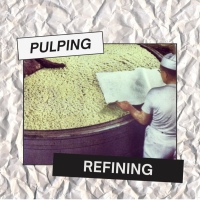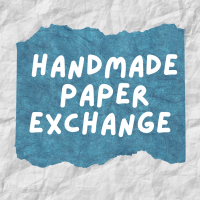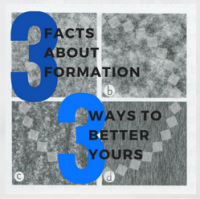Elemental Chlorine Bleaching and the Creation of Dioxin
You see a lot of acronyms on paper products. They show up on printer paper packaging and catalogues and on the boxes your Amazon order arrives in. Some of these acronyms refer to bleaching processes used in the manufacture of paper, specifically indicating the role that chlorine played.
Consumers desire white paper. To achieve this whiteness the pulp is bleached to remove color associated with residual lignin. Elemental chlorine was once the bleaching agent of choice as it is incredibly effective in whitening and brightening. However, in the late 1980s, researchers working in waterways around pulp bleaching and effluent treatment operations started detecting dioxins in fish.
The World Health Organization lists dioxin as a member of the ‘dirty dozen,’ a group of highly toxic and persistent environmental pollutants. It easily absorbs into fatty tissues of living organisms and becomes more concentrated as it moves up the food chain. Of the 400+ identified dioxin compounds, 30 are classified as toxic. The dioxin with the highest toxicity is 2,3,7,8- tetrachlorodibenzo para dioxin (TCDD). This dioxin was a main component in the herbicide ‘Agent Orange.’ Dioxin is introduced naturally following volcanic activity or forest fire but most of the dioxin in the environment is introduce by human industry. Unfortunately, the Pulp and Paper Industry has contributed greatly to TCDD production in the past.

2,3,7,8- tetrachlorodibenzo para dioxin
A screening study of five mills released in 1988 by the EPA and the U.S. Pulp and Paper Industry reported that pulping operations might be creating and discharging TCDD. A further study in 1990, known as the 104 Mill Study, surveyed all the mills where wood pulp bleaching used elemental chlorine to characterize the exports. Eventually, the puzzle of how TCDD was being made was solved.
In bleaching, the elemental chlorine reacts with residual lignin resulting in brightening. With this desired action, the Pulp and Paper Industry was also unknowingly creating TCDD. The elemental chlorine interacts with the benzene rings present in the lignin molecule (and there are lots of them). When the benzene rings are chlorinated, the result is TCDD creation.

benzene ring
Being one of the most toxic chemicals known to science, no level of dioxin creation is acceptable. The Pulp and Paper Industry has developed new ways of bleaching that do not involve elemental chlorine or result in dioxin creation. When you see the acronym ‘ECF’ on your paper it stands for ‘elemental chlorine free.’
If there are parts of the story I’ve left out, please expand on it for us in the comment section.





Speaking of paper toxins, I remember vaguely as a child I saw water coming from one of the mills in upstate New York that was turned whatever color they were producing that day. Yellow and blue are the clearest memories. BTW ‘On Paper’ continues to amuse, inform & delight.
LikeLike
A friend of mine was recently talking about these historical technicolor water discharges from paper mills. Do you remember how long the color changes would last? Any chance you have pictures? I’m excited to hear you’re reading ‘On Paper’ and that you are enjoying it. My copy is waiting for the end of the semester!
LikeLike
No idea how long. Just a situation that caught the eye of a child.
LikeLike
genevieve, i grew up less than 10 miles from love canal. (that’s also why i left western ny) we used to joke about our daily dioxin intake. a sad, dark joke, certainly, and of my immediate family three died from cancers–
LikeLike
Reading your story reminded me of Terry Tempest Williams who wrote about losing so many family members to cancers as a result of atomic weapons testing in Nevada. Also Kurt Vonnegout who said, ‘The best jokes are dangerous and dangerous because they are in some way truthful.’ I think that the human impact of environmental tragedy and injustice is difficult to fully convey, particularly in academic settings and especially when learning about historical events. Thank you for adding that dimension back into this very science-y post. I totally overlooked it.
LikeLike
When I worked as in journalist in south Louisiana, I knew a state Rep. who said, “It’s not a problem until it’s your problem.” (He lobbies for parents with disabled children.) Sometimes a more forceful story is put forward by one with experience with it. In my case it is violence against women. A harder narrative to gain a following with but environmentally toxic (so to speak).
LikeLiked by 1 person
Update: It was Napanoch Paper Mill on Continental Rd. Feds came after the abandoned mill in 1999. They may have superfunding.
LikeLiked by 1 person
Thanks for digging up the name. It looks like it was superfunded, like you said.
LikeLike
Is it also true about handmade paper process in which lingin is first in taken out by cooking in alkaline solution?
LikeLike
Removal of lignin is one objective of cooking fibers in alkaline solution, yes. That process does not result in the creation of dioxins; however, if that is what you are asking.
LikeLike
what I am asking exactly is : is it harmless if we use chlorine bleach after cooking fibers in alkaline?
LikeLike
Elemental chlorine, once used for bleaching of pulp, is a gas. Chlorine bleach is a solution of sodium hypochlorite and water. Mixing chlorine bleach with fibers that have been cooked in an alkaline solution will not create dioxins. I hope this helps! Is using chlorine bleach a regular part of your process?
LikeLike
Thanks for clarification. Yes we use chlorine bleach to get buff and cream papers out of rice straw. This was a solution in hand and we do not know if there would be any problem or no.
LikeLike